Most drivers have a good idea about the benefits of doing regular maintenance on their vehicle but knowing what service to have done (and when) is a different story.
Every so often, it becomes necessary to mount a new set of tires on a vehicle, whether that’s by choice or by necessity. You might simply want to install different tires to switch from summer to winter tires or you might be forced into the situation with an unexpected flat that demands a new purchase.
Some DIY enthusiasts or those looking to avoid trips to the shop might try to mount tires onto their vehicle by themselves. But while there are certainly those who know how to perform tire mounting at home, it’s easy to overlook some of the essential aspects of the process, such as properly balancing the tires when mounting.
Whether you are an expert looking for a refresher or are a beginner wondering how to do tire mounting yourself, let’s dive into the specifics involved in the process.
Simply put, tire mounting is the procedure of installing tires onto the wheels, which are then installed onto the car’s axle.
Tire balancing is the most complex part of the tire mounting process. When you mount tires, it’s essential that they are properly centered on the wheel to ensure the smoothest ride. But doing so is a difficult process without the technology available to the pros.
Can I Do This Myself?It is certainly possible for dedicated car enthusiasts to perform both tire mounting and tire balancing at home, although it is much more difficult and requires more effort without the proper equipment — especially the balancing process.
Professionals use tire mounting machines as well as various kinds of balancing equipment and technology. When installing tires, professionals can balance them through a method called road force balancing, pressing a roller against the tires while they spin, simulating the contact the tire would have with a road and analyzing the balance until it is complete. They also might perform a procedure called spin balancing, which allows much of the same analysis while simply spinning the tire at a high rate in the air. From there, professional tire installers can shift the weight on the wheel until the tires are balanced.
They also might perform a procedure called spin balancing, which allows much of the same analysis while simply spinning the tire at a high rate in the air. From there, professional tire installers can shift the weight on the wheel until the tires are balanced.
These are procedures that many professionals become experts at performing, so while it’s possible to do them yourself, it could be well worth your time, money, and effort to ask a pro to handle it.
What Could Go Wrong?As with most instances of DIY car maintenance, improper tire mounting and tire balancing can both lead to issues when you get back on the road. It is extremely important to ensure these processes are handled with care and detail to avoid any of those mishaps.
When a tire is not mounted or balanced correctly, it will be fairly obvious because of the vibrations you’ll feel. Tires might be mounted with too much lubricant that could cause slipping during braking or acceleration. If a tire is going to slip, it’ll likely happen shortly after it has been mounted. That could throw the tires back out of balance even if you did that aspect of the process correctly.
If a tire is going to slip, it’ll likely happen shortly after it has been mounted. That could throw the tires back out of balance even if you did that aspect of the process correctly.
Improper balance is more common among amateur maintenance because it is more complex. When driving, an imbalanced tire will likely vibrate as well because of its misalignment with the wheel’s center of gravity.
Not only will those vibrations make for a more uncomfortable ride, but the constant vibration could likely cause quicker wear on your tires. That, of course, means you are spending more money and going through the headaches of the process once again!
Contact Tread ConnectionFor those deciding that it may be simpler to let the professionals handle processes as complex as tire mounting and balancing, Tread Connection is here to help. Not only are the experts at Tread Connection some of the industry’s most knowledgeable, but they also work with industry-leading technology and equipment to ensure your tires are ready for the road.
Best of all, the pros at Tread Connection make it easy by coming to you. Mobile tire service allows you to have these procedures done whenever and wherever makes the most sense for your schedule. If you need to have your tires mounted and balanced but need to have it done in your driveway or in the parking lot at work, call your nearest Tread Connection location today!
Dave Gran Race Tires
While I don’t exactly enjoy spending money on tire purchases, at least I feel like I’m getting something for what I’m spending. Paying a shop between $100 and $120 to mount and balance each set of tires? That just frustrates me! Considering how often many of us racers need race tires mounted and balanced, this becomes expensive quickly. There’s got to be a better way.
Tire Mounting:
I first looked into manual tire mounting machines such as the Roger Kraus System which retails for $565 plus shipping. My online searches didn’t produce any used units available and from what I saw when used ones do go on sale, they go quickly and tend to hold their value. I spoke with the company for a bit and it sounded like it might work. My concern is that the Hoosier tires I use are even a challenge to the experienced guys who work at tire shops. (I put a 225 wide tire on a 6″ wide rim.) When talking with them about this concern, they said that it does take some time to get the technique down. If you’ve read any of our garage adventure articles, you’ll quickly realize that maybe this isn’t the ideal solution for us. I know what you maybe thinking – I wish they tried it and captured the mayhem on video!
My online searches didn’t produce any used units available and from what I saw when used ones do go on sale, they go quickly and tend to hold their value. I spoke with the company for a bit and it sounded like it might work. My concern is that the Hoosier tires I use are even a challenge to the experienced guys who work at tire shops. (I put a 225 wide tire on a 6″ wide rim.) When talking with them about this concern, they said that it does take some time to get the technique down. If you’ve read any of our garage adventure articles, you’ll quickly realize that maybe this isn’t the ideal solution for us. I know what you maybe thinking – I wish they tried it and captured the mayhem on video!
Then I began looking at pneumatic tire mounting machines. I found a used one from a shop that had closed down, but later realized that this was quite an old model and while okay for steel rims, there’s a high probability it would damage my race wheels. This would totally defeat my goal of saving money, therefore I ended up opting to pass on it. The better models quickly jumped in price. I estimated that would cost around $1,200 for a decent used machine. Then on top of that, it requires that you have an air compressor capable of 150 psi or more. The air compressor I currently have probably wouldn’t be adequate which means yet another expense. I attempted to justify purchasing the larger air compressor because it is something that I’d like to have, but that goes against my current goal of saving money for track time.
The better models quickly jumped in price. I estimated that would cost around $1,200 for a decent used machine. Then on top of that, it requires that you have an air compressor capable of 150 psi or more. The air compressor I currently have probably wouldn’t be adequate which means yet another expense. I attempted to justify purchasing the larger air compressor because it is something that I’d like to have, but that goes against my current goal of saving money for track time.
Evaluating the tire mounting decision further: The average price I’ve found to mount a tire is $10 each. Even to reach a cost break even on the manual machine, we’re looking at a minimum total of 60 tires (shipping costs for me would be more, but that’s close enough for this purpose). That’s a lot of tire mounting. Then factoring in time and potential frustration, it is hard to justify purchasing a tire mounting machine. With most race tires having a stiff sidewall, mounting them can be challenging even for guys in the industry who are experienced and have quality equipment.
Tire Balancing:
There still was the potential opportunity to save money on tire balancing. Again based on the averages I see, tire balancing averaged $15 – $20 per tire for the shops I frequent. It quickly became evident that purchasing a dynamic balancing machine (spin balancing) like tire shops utilize would be too expensive (over $1,000). I then learned about static balancers which are also referred to as “bubble balancers”. As with most topics researched on the web, you’ll find quite a bit of conflicting information about using this type of balancing machine. A downside of the static balancing method is it can still result in the wheels having dynamic imbalance. Dynamic Imbalance occurs when there is unequal weight on one or both sides of the wheel assembly’s lateral center line, which then results in side-to-side wobble or wheel shimmy. At the same time, this was the method used for many years before the better dynamic balancing machines were available. I was able to find a static balancing machine on sale for $60 at HarborFreight (currently it is $69). It was also necessary to purchase a package of wheel weights, but they were on sale for only $4 which included 12 strips. For an investment of less than $75, balancing a set of rims would almost cover this expense. Why not give it a try?
I was able to find a static balancing machine on sale for $60 at HarborFreight (currently it is $69). It was also necessary to purchase a package of wheel weights, but they were on sale for only $4 which included 12 strips. For an investment of less than $75, balancing a set of rims would almost cover this expense. Why not give it a try?
That weekend I was in need of having a set of tires mounted and balanced. I brought the tires to the shop, had them mounted and walked away with a bill of $40. Not bad considering how much of a struggle it can be to mount race tires. Now for the balancing act. Admittedly I was a bit nervous about balancing them, but the process turned out to be fairly simple and quick to complete. I informed Kai about my purchasing this machine and he wasn’t quite enthusiastic with my saying “this method should work.” Instead of getting “Dave, that’s a brilliant idea!” I quickly received a reply message of “dude, you know our track record with these types of things, right?”
Well don’t worry Kai, we’ll first give this a try with your Civic rims and tires.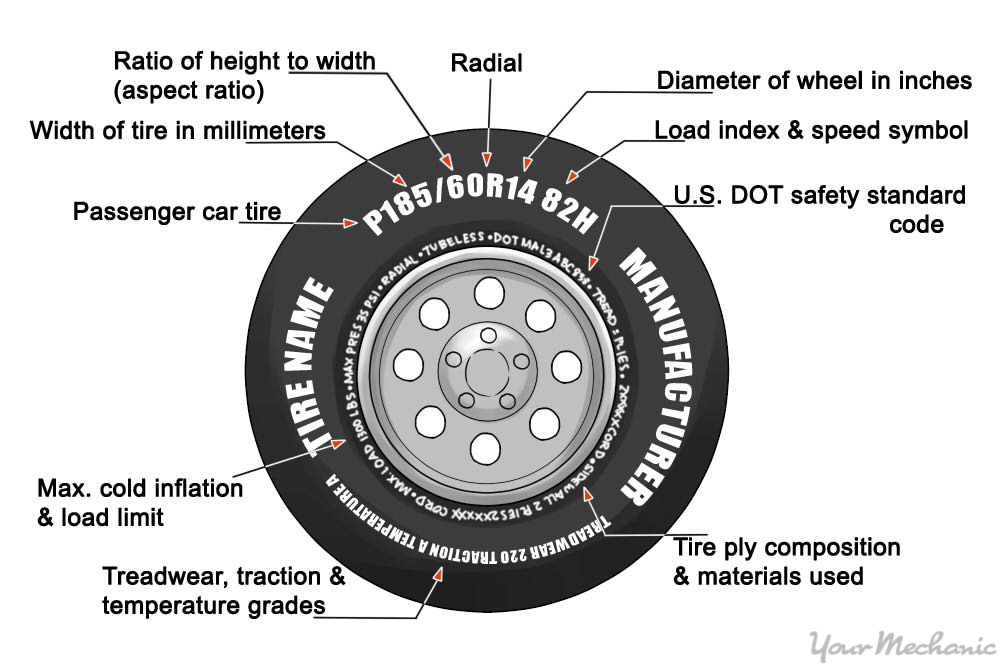 <grin>
<grin>
Depending on how lucky I get, it typically takes less than 5 minutes to balance each rim. Like most things, the more experience one gets the faster this process becomes.
I’ve now used the static balancing machine successfully to balance multiple sets of race tires / rims. When out on the track I have not noticed any imbalance in the wheels. The first time out I was almost expecting the steering wheel to shake. Is there any imbalance? Quite possibly but even when inspecting the tires after a session, there’s often a fair amount of rubber stuck to the wheel anyway which also causes it to be out of perfect balance. If I were racing a ultra fast formula car, I doubt that I’d attempt to use this method but it works great for the majority of cars we race. It was absolutely a worthwhile investment for me.
It was absolutely a worthwhile investment for me.
What are your thoughts? Will you give one of these a try? Or will you still prefer to have a shop mount and balance your race tires and rims?
Note: I still will have a tire shop use a dynamic balancing machine for my street cars especially because they require balancing so infrequently.
During the operation of the car, the wheel balance sometimes goes astray and therefore it needs to be restored. Unbalance can occur after hitting a curb slightly, driving on poor road surfaces and getting into potholes, as well as uneven tire wear. There are cases when, having just left the tire shop after installing new tires, the driver could abruptly start off the traffic light with a slip. As a result of this, tires with mounting paste not dried on them scrolled on the disks, and the balance was also disturbed.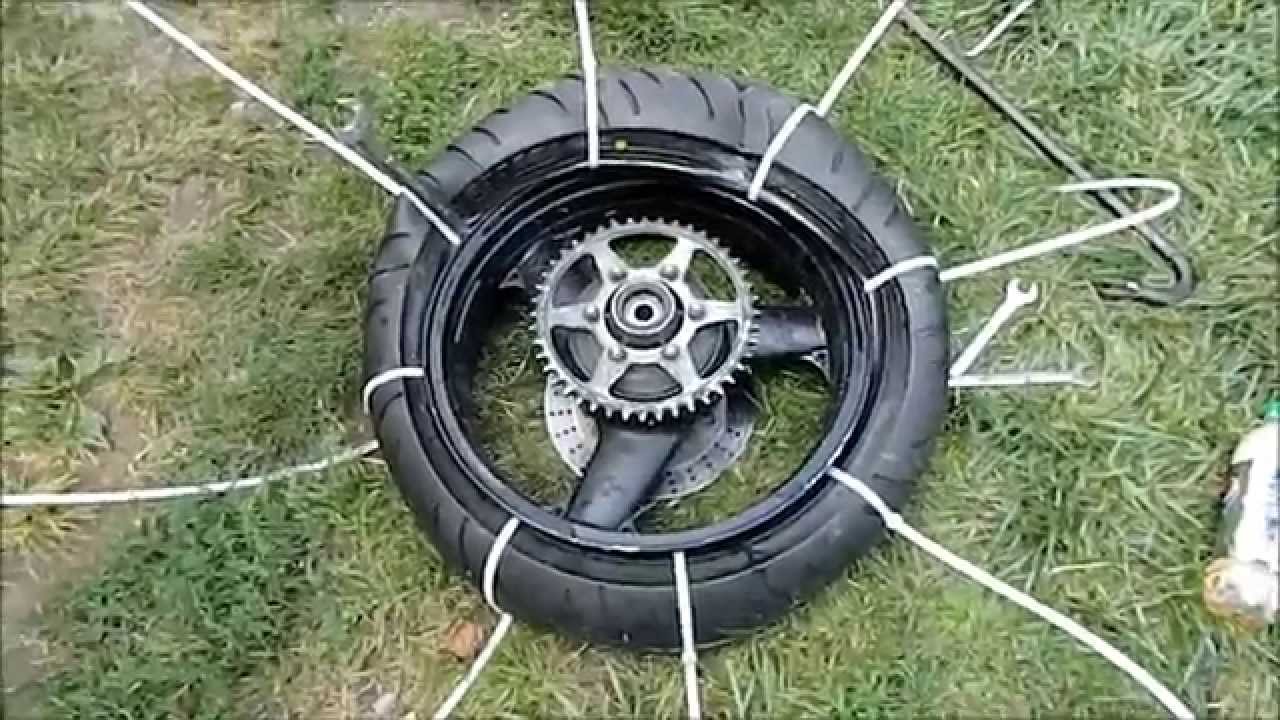 Therefore, after replacing the rubber, it is recommended to drive in the break-in mode for the first few days - without sudden starts and braking.
Therefore, after replacing the rubber, it is recommended to drive in the break-in mode for the first few days - without sudden starts and braking.
Imbalance (imbalance of the wheel) entails accelerated uneven wear of the tread and runout on the steering wheel, and if you do not take action in time, it will eventually lead to breakdowns of the suspension and steering.
It is important to rebalance the wheels as soon as signs of imbalance are detected, as this causes a reduction in agility, adversely affects road grip and significantly reduces ride comfort with characteristic vibration in the steering wheel and noise.
Many drivers make the mistake of neglecting to rebalance, justifying it with cost savings. The consequences will cost much more, not to mention the safety on the road.
This article will help you understand the features and subtleties of balancing and answer the questions that drivers have when the wheels of their cars are unbalanced.
The essence of wheel balancing is to adjust its mass so that the actual center of gravity is in the middle of the geometric one. Thus, during rotation, the mass is distributed evenly, vibration does not occur, and the life of the tire and bearings increases.
Thus, during rotation, the mass is distributed evenly, vibration does not occur, and the life of the tire and bearings increases.
While restoring the balance, the master uses special equipment - a balancing machine that rotates the car wheel and simulates its behavior on the road. Sensors determine deviations in balance, after which the electronics calculates the weight of the required counterweight and its installation location.
Counterweights (weights) of different weights are then used, which compensate for the detected deviations from the norm, whether it be static, dynamic or combined unbalance.
Be aware that after a balanced wheel is fitted to the machine, unbalance caused by other moving parts may remain.
Finish balancing is the final creation of the desired balance, which is performed after the basic correction of the rim and tire masses. It is carried out with tires and discs installed on the machine, since a violation in the masses can be caused by hubs, brake discs or drums, axle shafts and other moving parts.
For this operation, special equipment is used - a mobile stand that reads data on vibrations that occur during rotation without removing the disk and rubber from the car, while standing on racks with sensitive sensors. Taking into account more complete data, additional counterweights are installed.
Also use balancing granules (powder), poured directly into the tire. Due to the fact that they move freely inside the tires, there is a uniform distribution of mass. The advantage of this approach is the safety of the granules, they will not go anywhere from tires during operation, unlike weights that tend to get lost.
Negative consequences of driving without balancing:

(ℹ) For more information on the topic of the last paragraph, see the corresponding article - “Uneven tire wear”.
Wheel imbalance is a discrepancy between the axis of rotation and the axis of inertia, due to which its mass is displaced and distributed unevenly during rotation. In order for the rotation to be balanced, the axis of inertia must pass through the center of the wheel.
In order for the rotation to be balanced, the axis of inertia must pass through the center of the wheel.
(ℹ) Unbalance, in addition to the disk and tire itself, also occurs at the hub and at the brake drum.
There are the following types: static and dynamic, if they are combined - combined.
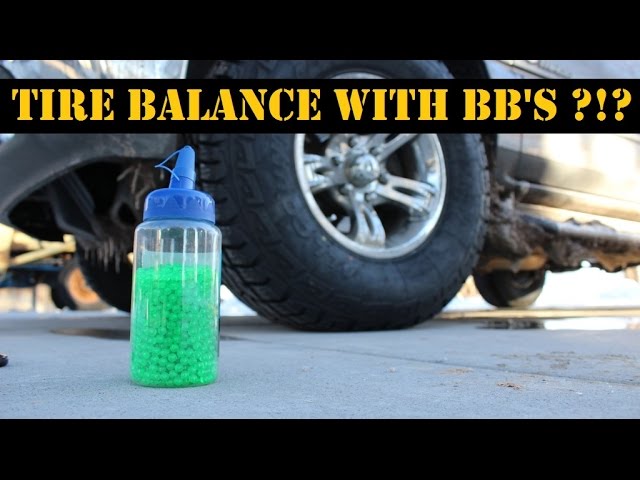
A common cause of imbalance is damage to the rims when hitting a curb or hitting a pothole at high speed. The presence of even a small dent on the disc can shift the center of gravity and cause vibration during movement.
The presence of even a small dent on the disc can shift the center of gravity and cause vibration during movement.
Also, tire imbalance is often caused by tires, since during operation they are subjected to heavy loads and can receive certain defects.
Causes of wheel imbalance:
(ℹ) The cause of unbalance and unwanted vibrations can be instep supports (centering rings), or rather their absence, as well as improper selection or failure.
If the diameter of the hub and the center hole of the disc (DIA) do not match, it is necessary to install centering rings that compensate for their difference.
(ℹ) Even a small deviation in the balance of a car wheel can significantly affect the suspension and subject it to large loads. According to approximate calculations, a difference in weight of 10 g turns into 2.5 kg, if the car moves at a speed of 100 km / h, then in a minute the suspension will receive about 1000 hits of such a mass.
According to approximate calculations, a difference in weight of 10 g turns into 2.5 kg, if the car moves at a speed of 100 km / h, then in a minute the suspension will receive about 1000 hits of such a mass.
If, when accelerating, vibrations appear in the steering wheel, body, and noise occurs, it is highly likely that the wheels need to be balanced.
Depending on the degree and type of imbalance, symptoms may appear at different speeds:
Signs indicating a malfunction:

⚠️ Important! When accelerating on unbalanced wheels, shaking and noise will increase, as well as a characteristic kickback in the steering wheel and pedals. With a serious imbalance, directional stability will noticeably decrease, and driving will become potentially dangerous.
On different axles, the imbalance manifests itself in different ways and its signs may differ:
⚠️ Important! Car owners often ask: "Do I need to do balancing on the rear axle?". Answer: yes, definitely! Despite the fact that the driver does not feel the imbalance so clearly on the rear axle, all its negative impact remains and cannot be ignored.
(ℹ) If trembling is felt only while pressing the brake pedal, the reason may be in the brake discs (if one of them is deformed, both should be replaced on the axle) or in the jamming of the caliper.
The frequency of balancing depends on the following factors:
Depending on the manufacturer, there are different colored marks on tires, as a rule, these are:
The yellow dot is the lightest place on the tire, it is combined with the heaviest place on the rim (inflation valve or the opposite point from the "L" mark) , this helps not to use additional weights.
The red dot is the heaviest part of the tire, as a rule, there is a carcass connection, it is combined with the lightest part of the disk (the designation “L”, is not always indicated).
For correct balancing it is necessary:

Yes, new tires and rims must be balanced. Even though it is a new set of wheels and has not been used yet, it has heavy and light spots that need to be properly balanced. Proper mounting and balancing will help ensure long and safe operation of the wheels.
Yes, in most cases, after a new tire has been broken in, it should be re-balanced (on average after about 500-1000 km). This is due to the fact that only during operation under load the tire will take its final position on the disk.
The effect of the so-called "shrinkage" can occur due to the change in the position of the tire under pressure and the weight of the vehicle. Also, during the break-in process, the rubber may turn a little on the disc due to too sharp a start from a standstill, braking or maneuvering.
All of the above often leads to a change in balance, so balancing after a break-in is necessary.
(ℹ) It should be noted that on the forums, some motorists, sharing their personal experience, claim that after running in they did not need balancing. A slight imbalance was caused only by sand and dirt accumulated on the inside of the disk, which turned out after washing.
This scenario is possible, but on the condition that during installation the tire immediately took the “ideal position”, and the driver adheres to a careful driving style and drives only on good roads - which is very rare.
First you need to do the balancing of the wheels, then the wheel alignment. This applies to both seasonal tire changes and scheduled maintenance or visits to a service station if signs of violation of installation angles are found.
Let's consider each case separately and see why balancing is performed first, and then the wheel alignment angles are adjusted:
check the toe and camber angles on the stand.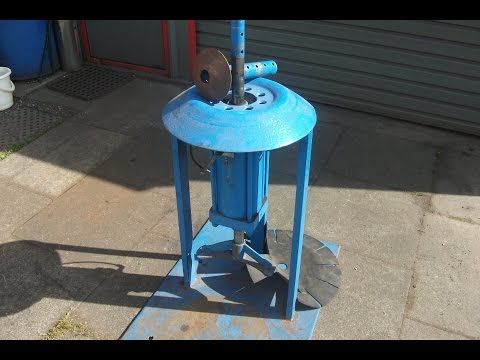
Adjustment of the alignment angles is carried out only after installing new wheels, because any change in the parameters of tires and wheels can affect the required alignment angles. For example, a change in the optimal angle for a correct installation could be caused by:
(ℹ) The owner's manual of some car models obliges the driver to adjust the angles when changing tires for the season. Often this requirement applies to premium segment cars with large disc diameters and complex kinematic suspension. If there are no such rules from the auto manufacturer’s factory, then this prescription is advisory in nature, which is important to listen to.
2. During scheduled maintenance (prevention) - the wheels are removed, their mass is corrected and installed on the car in a different order in accordance with the rearrangement (rotation) scheme in order to extend the rubber life. Accordingly, the adjustment of the angles occurs after this procedure. Maintenance is carried out on average every 10 thousand km.
Accordingly, the adjustment of the angles occurs after this procedure. Maintenance is carried out on average every 10 thousand km.
3. In case of an unscheduled visit to the service station due to a violation of the corners - experts insist on balancing in the first place to eliminate this malfunction.
(ℹ) In addition to uneven tire wear, signs of poor camber may include the machine pulling to the side when the steering wheel is released and its unnatural (uneven) position when driving straight ahead.
Summarizing the above, we can conclude that balancing should be done, and at the first signs of imbalance, it must be promptly eliminated. This will ensure safety and comfort on the road, save the life of vehicle components, in particular the suspension and tires, and also help save fuel.
Even a small deviation, whether it be grams or degrees, which may not be felt while driving, certainly affects the life of rubber and suspension.
Remember, timely car service today is saving time and money tomorrow, because prevention is always cheaper than repair!
We wish your car no malfunctions, and the wheels always be balanced!
Photo: AutoVzglyad
Motorists know that unbalanced wheels cause unpleasant vibrations and wobbles in the car. Before installation, the tires and wheels assembled together must be sent to a balancing machine, where the tire fitting master hangs weights on them, thereby eliminating wheel imbalance. However, not everyone knows that wheels need balancing much more often than when changing tires.
Efim Rozkin
Unfortunately, no wheels have yet been invented that do not need balancing. Both the tires and the rims on which they are mounted are not ideal in terms of balance. And if such wheels are installed on a car, then vibrations, hum and beating in the steering wheel will not take long. Moreover, the imbalance can be not only congenital, but also acquired during the operation of tires and disks - damage, uneven abrasion and other factors also provoke wheel imbalance. Beating can be provoked even by decorative caps that were installed after balancing. In general, if you feel that at speed the car began to generate vibrations in a strange way, then it's time to visit a tire shop to sort out the problem.
Moreover, the imbalance can be not only congenital, but also acquired during the operation of tires and disks - damage, uneven abrasion and other factors also provoke wheel imbalance. Beating can be provoked even by decorative caps that were installed after balancing. In general, if you feel that at speed the car began to generate vibrations in a strange way, then it's time to visit a tire shop to sort out the problem.
Specialists can easily determine which wheel has a problem by installing them on a special wheel balancer. At the moment of rotation of the wheel, the machine determines the place on it, where and how much weight it is necessary to put the weight. Traditionally, weights are molded on the inside of the wheel - it's more aesthetically pleasing. However, there are severe cases when compensating weights on the outer part of the wheel are indispensable. But here you don’t have to choose - safety.
As a rule, wheel balancing is recommended every 10-15,000 kilometers.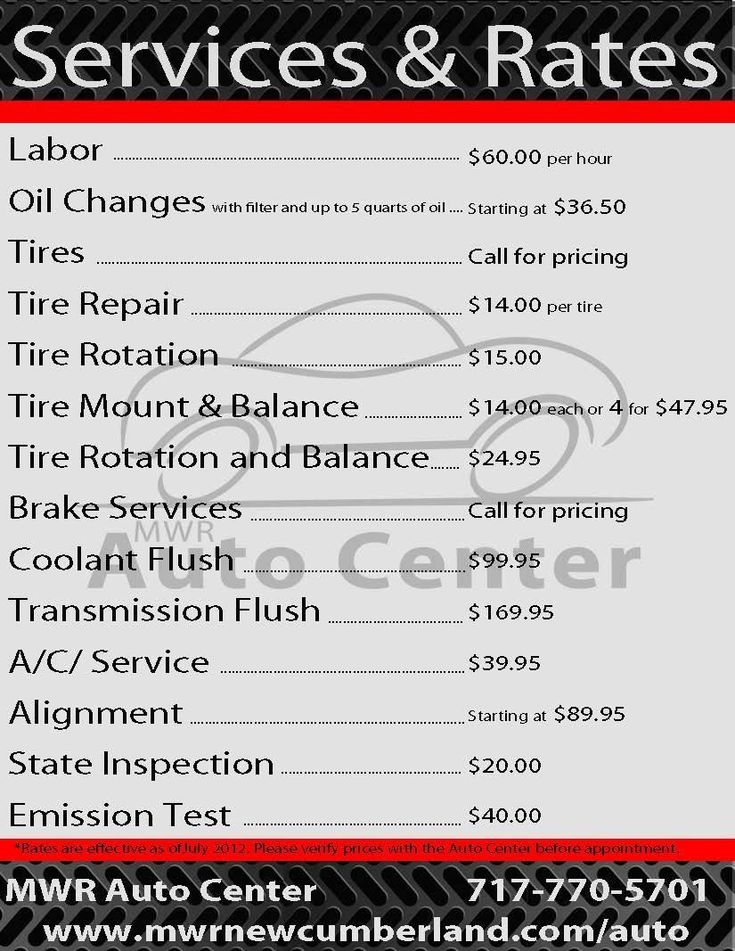 However, you need to understand that this is an ideal case. In fact, it all depends on the driving style of the driver, his accuracy and, of course, the condition of the roads in the region where the car is used. Therefore, it is best if wheel balancing is carried out at each seasonal tire change. Moreover, this must be done, even if each set of rubber has its own set of disks. But this is not a panacea either.
However, you need to understand that this is an ideal case. In fact, it all depends on the driving style of the driver, his accuracy and, of course, the condition of the roads in the region where the car is used. Therefore, it is best if wheel balancing is carried out at each seasonal tire change. Moreover, this must be done, even if each set of rubber has its own set of disks. But this is not a panacea either.
Photo: AvtoVzglyad
So, for example, winter studded tires tend to lose studs. And this process causes wheel imbalance. In addition, in winter, roads lose part of the asphalt, and motorists are forced to move along potholes and outright pits. At the same time, the tires and wheels of the car experience the strongest load, which does not always pass without a trace. Therefore, it will be better if you make it a rule to visit a tire shop once every 5000 km.
Fans of racing are advised to visit the master every 7-8 thousand km. Here it is necessary to check not only the balance, but also the condition of the tread and the tire carcass.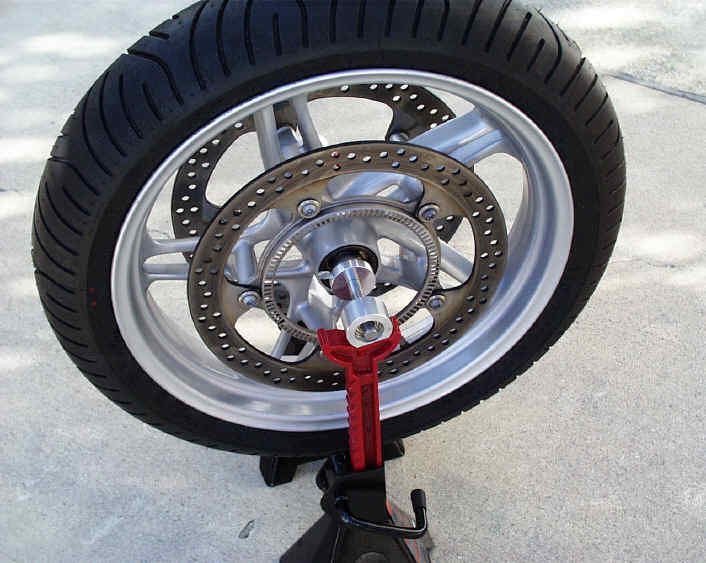 Aggressive driving requires more responsibility. Including in relation to the wheels, which during extreme use, as in the case of winter operation, experience high overloads. And if non-specialized tires designed for aggressive driving are installed on the car, then it is necessary to check their condition much more often.
Aggressive driving requires more responsibility. Including in relation to the wheels, which during extreme use, as in the case of winter operation, experience high overloads. And if non-specialized tires designed for aggressive driving are installed on the car, then it is necessary to check their condition much more often.
Tire repair is also a reason to balance the wheel. Even a small patch brings confusion to the balance. And its negative impact must be offset by a counterbalance.
In general, no matter how much you would like to, but you need to call in and spend money on tire fitting a little more often and a little more. If you ignore this procedure, then in addition to parasitic vibrations and beats that appear at different speeds, uneven and, moreover, rapid tire wear occurs. Over time, detonation will adversely affect the suspension, steering and braking system. And this is a completely different expense. Let's not talk about other risks at all ...
after what time it will not be possible to remove the bitumen from the car
9,0007
after what time it will not be possible to remove the bitumen from the machine 9000 9,000 Subscribe to the Avtovzglyad channel:
